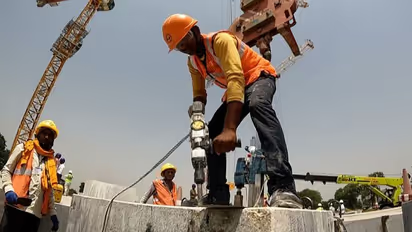Explained: True story behind the Ayodhya Ram Mandir design

Synopsis
Nripendra Misra, Chairman of the Ram Mandir construction committee, tells Asianet News' Rajesh Kalra in an exclusive interview about how the Ram Mandir design evolved since 1992.
Come December 2023, the Ayodhya Ram Mandir will be open for pilgrims. Even though the temple work may take another year to complete, pilgrims would be able to offer prayers at the 'Grabha Griha' or the sanctum sanctorum.
Also Read: Asianet News Exclusive: Inside the Ram Mandir in Ayodhya
But there is an even more interesting story about the design of the Ram Mandir, which Nripendra Misra, Chairman of the Ram Mandir construction committee, told Asianet News' Rajesh Kalra in an exclusive interview.
Asked about the style in which the temple is being built, Misra said, "The temple architect was one Mr (Chandrakant) Sompura. The Sompura family in Gujarat has built temples only. This agreement was signed in 1992. The architect was given this job in 1992. He, out of all the temples, decided that this temple should be made in the 'Nagara' style of architecture. He provided that."
To note, the Sompura family has hundreds of temples in India and abroad. In fact, Chandrakant worked on the Somnath Temple in Gujarat along with his father Prabhakar Sompura. In the 'Nagara' style, proposed by Chandrakant, the sanctum sanctorum of the temple is shaped like an octagon while the temple perimeter is circular.
"The design was put to many religious leaders. Even individual views were taken from the religious leaders of Ayodhya. We said this is how we are building. Of course, it was easy to say that we are looking for something that is unparalleled, something that would be unique. It will have a size that would be considered very impressive," he said.
Elaborating on how the Ram Mandir is a mix of modernity and faith, Misra said: "The technical features combined with religious sentiments, in many ways, they were audited by the engineers who recommended that architectural design is perhaps one of the most suitable designs and will be compatible with the target of 1000 years."
"The saints and religious leaders also approved that there seems to be in keeping with the tradition of Raghuvansh. That is how the design was created," he added.
Also Read: Ayodhya Ram Mandir will be earthquake-proof. Here's how?
Stay updated with the Breaking News Today and Latest News from across India and around the world. Get real-time updates, in-depth analysis, and comprehensive coverage of India News, World News, Indian Defence News, Kerala News, and Karnataka News. From politics to current affairs, follow every major story as it unfolds. IMD cities weather forecastsRain Cyclone Asianet News Official App